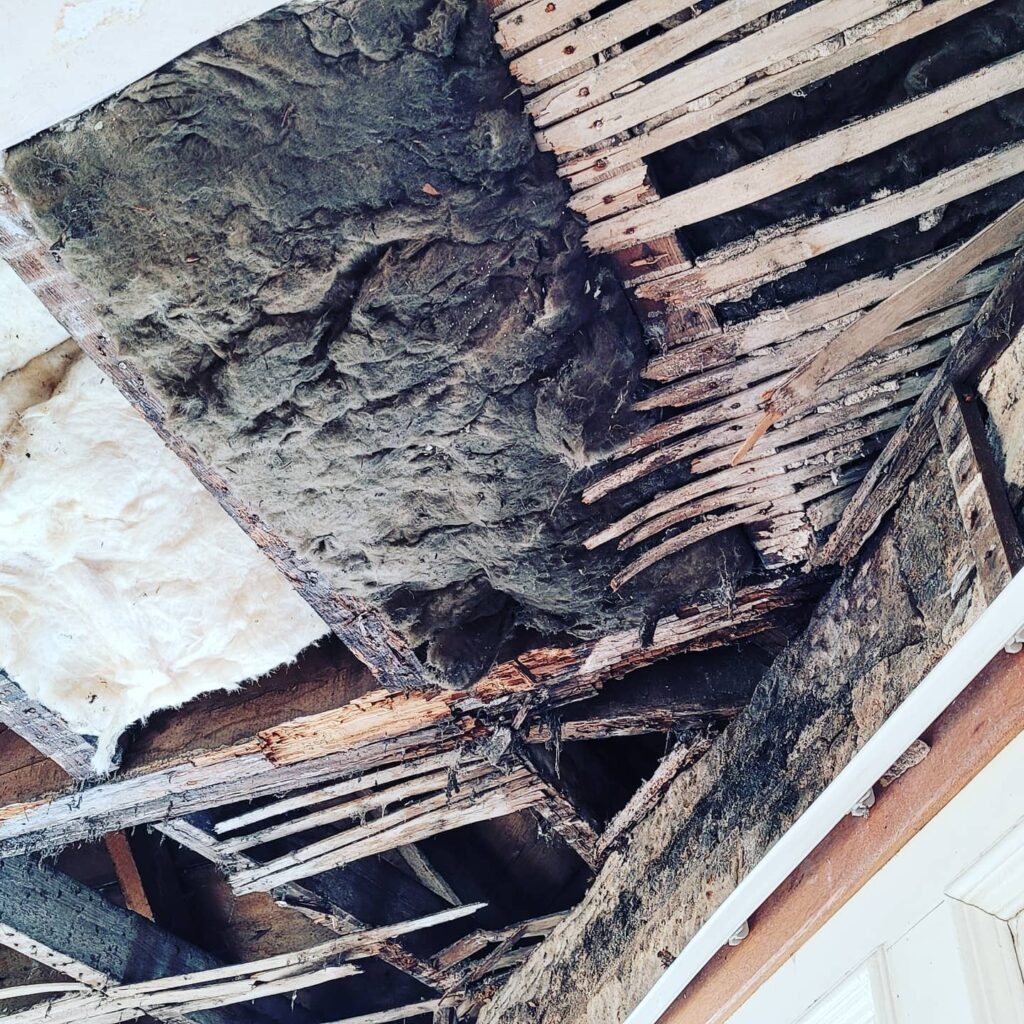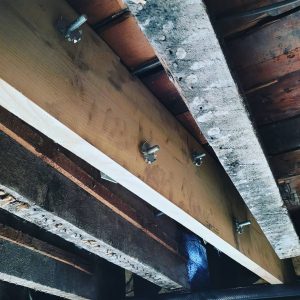OUR SERVICES
DRY ROT TREATMENT
NEED HELP WITH DRY ROT?
CALL US TODAY OR REQUEST A SURVEY ONLINE
Dry Rot Treatment Specialists
We are a leading specialist in Dry Rot Treatment, committed to safeguarding the structural integrity of properties throughout Scotland. With our expertise in combating this destructive fungal decay, we offer tailored solutions designed to address dry rot infestations effectively. Our dedicated team understands the unique challenges posed by dry rot in the UK’s diverse climate, and we apply proven methods and state-of-the-art technology to eliminate the issue at its source.
Trust us to protect your investment and ensure your property remains dry, secure, and resilient for years to come.
What is Dry Rot?
Dry rot, scientifically known as Serpula lacrymans, is a destructive fungal decay that targets timber and can compromise the structural integrity of buildings. It thrives in damp, poorly ventilated conditions and can cause severe damage if left untreated.

What are the Signs of Dry Rot?
Identifying dry rot early is crucial to preventing extensive damage to your property. Here are the key signs to watch out for:
Dry rot primarily affects timber, causing it to become brittle, darkened, and cracked. Look for timber that easily crumbles or breaks when touched. This weakened wood is a clear indication of dry rot’s presence.
One of the most distinctive signs of dry rot is the presence of a rusty red or reddish-brown spore dust. You may notice this dust collecting around affected timber or on nearby surfaces. It resembles a fine powder and can be a surefire indicator of dry rot.
Dry rot often produces grey or silvery strands on the surface of timber. These strands, also known as mycelium, can resemble cobwebs but are a clear sign of fungal growth. Mycelium can spread rapidly and should be addressed promptly.
In addition to grey strands, dry rot can also manifest as a white, cotton wool-like substance. This white mycelium is a further indication of active fungal growth and may accompany the presence of spore dust.
Mature dry rot can develop fruiting bodies, which are often referred to as “pancake” or “mushroom” structures. These growths can vary in size but are typically flat and have a rusty-red or deep brown color. If you spot these fruiting bodies, it’s a clear sign that dry rot has been active for some time.
A damp, musty odor is often associated with dry rot-infested areas. If you notice this distinctive smell in your property, especially in combination with other signs, it’s a strong indication that dry rot may be present, even if it’s not immediately visible.
Being vigilant and recognizing these signs of dry rot can help you address the issue before it causes extensive damage to your property. If you suspect dry rot, it’s essential to seek professional assistance for a thorough inspection and appropriate treatment.
What Causes Dry Rot in a Property?
Dry rot is primarily caused by excess moisture in timber. It often starts when wood is exposed to prolonged dampness, making it susceptible to fungal spores. Poorly maintained plumbing, leaking roofs, and inadequate ventilation can all contribute to the development of dry rot.
The most significant factor contributing to dry rot is excess moisture. Timber becomes vulnerable when it absorbs moisture, creating an ideal environment for the fungus to thrive. Prolonged exposure to high humidity, leaking roofs, plumbing leaks, or flooding can introduce the moisture needed for dry rot to develop.
Inadequate ventilation within a building can trap moisture and humidity, creating conditions conducive to dry rot. Stagnant air allows moisture to accumulate and promotes the growth of the fungus.
Poor ventilation and high humidity levels can cause water vapor to condense on surfaces.
Plumbing leaks, especially those that go undetected or unrepaired for an extended period, can introduce moisture into wall cavities, floors, and structural components. This moisture can saturate timber, providing the ideal conditions for dry rot to take hold.
Leaking roofs allow rainwater to penetrate the building structure. Over time, this moisture can seep into timbers, promoting dry rot development. Roof leaks are a common cause of dry rot in upper floors and attic spaces.
Areas with poor drainage, insufficient waterproofing, or damp basements and crawlspaces are vulnerable to moisture buildup. This can lead to the development of dry rot in the wooden structures supporting the buildi
Lack of regular inspections and maintenance can lead to unnoticed issues like leaks or inadequate ventilation, providing the ideal conditions for dry rot to thrive unnoticed.
Using timber with a high moisture content in construction can increase the risk of dry rot. Properly seasoned and treated timber is less susceptible to fungal dec
Dry rot is primarily caused by excess moisture in timber. It often starts when wood is exposed to prolonged dampness, making it susceptible to fungal spores. Poorly maintained plumbing, leaking roofs, and inadequate ventilation can all contribute to the development of dry rot.



